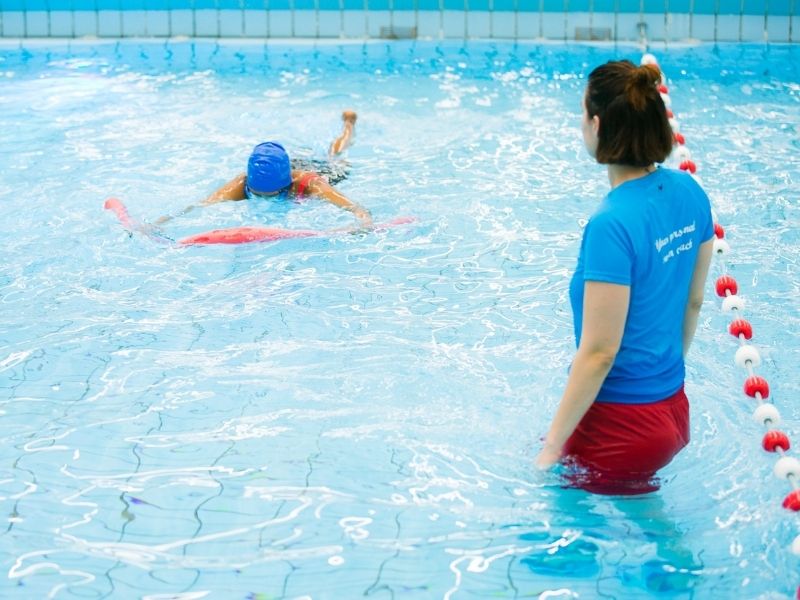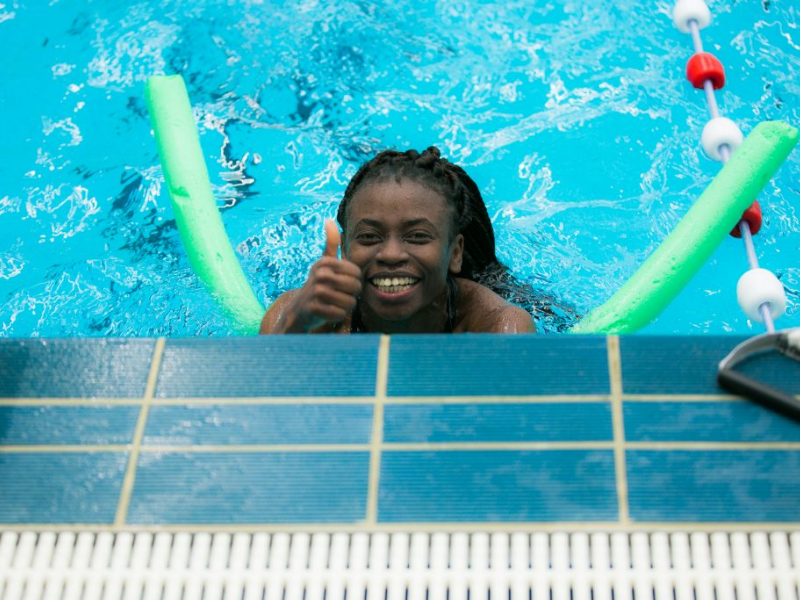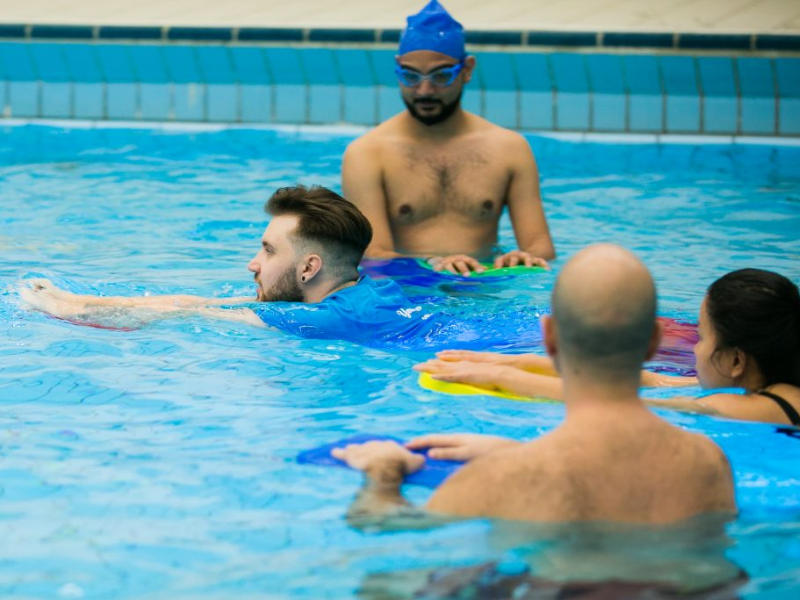Swimming Tip – How to Tread Water to stay afloat
Treading water
Keep your head up
Treading water is the key survival technique that enables you to keep your head above water, preventing you from sinking under and potentially drowning.
You will learn how to tread water with Your Personal Swim Coach as soon as you are ready. It is a key skill to master when moving into deeper water.
Watch our water treading video or follow the instructions below to help you to learn this useful skill.
Practice the arm movement while standing in shallow water. Arms are just as important as legs for treading water.
The arm moment known as “skulling” involves sweeping your forearms back and forth, moving outwards from and back towards your body. Keep your wrists still throughout the motion and tilt your palms away from your body on the outward stroke and back towards your body on the inward stroke. This will push the water around you from the force of your forearms.
Step 2.
Move to deeper water where your feet cannot touch the bottom, but remain holding onto the side of the pool.
Keep your body vertical, with your legs below you. Kick your legs in a scissor motion, known as the flutter kick. Do not bend your knees, but keep your legs flexible and relaxed and with pointed toes.
Step 3.
Staying close to the wall, let go and practise the arms and legs together. At first, you can use a floatation device to help you. This kick motion can become exhausting quite quickly, so it is useful to learn the second kick technique that can keep you afloat for longer.
Step 4.
Holding on to the side of the pool once again and with your legs vertically below you, learn the a circular kick motion that is less exhausting, but slightly more difficult to master than the flutter kick. This is a basic breaststroke kick.
- Put your legs together straight, with your heels touching, knees together and toes pointed outwards, like a ballet dancer.
- Keeping your heels together, bend your knees up and out to raise your heels up towards your body.
- Still with your toes pointed outwards, kick your legs downwards and to the sides, as if you were going to stand on the bottom of the pool with your legs apart.
- Bring your heels back together, back into the straight leg first position, ready to begin the cycle again.
- Repeat this cycle while holding the pool edge, until you feel comfortable with the movement.
Step 5.
Hold a floatation device (such as a kick board) to practice the leg movement away from the wall, but still close enough that you can hold the wall if you need to. When you are ready, put aside the floatation aid and combine the arm movement skulling, along with the circular breast stroke movement legs.
You should be able to keep this treading water going for longer periods each time. Start with ten seconds, then gradually build up to a minute.
With this skill mastered, you will hugely increase your level of safety in the water.
Learn How to Float
How an individual floats is determined by the buoyant force from water and the pull of gravity. This article explains floating from a physics point of view.
Overcome Fear of Water
Over the last 6 years, Your Personal Swim Coach has helped people who had to deal with a severe fear of water daily. But what exactly is Aquaphobia and how do we deal with it?
Our adult swim classes
Your Personal Swim Coach will help you become a more confident you, a stronger, fitter and healthier you, a happier, care-free you and ensure your success in learning to enjoy and feel safe in and around water!
Water Introduction
If you cannot swim at all and are fearful and/or challenged in water generally.
You took classes before and failed or it has been a very long time ago.
Intermediate
You can swim comfortable in shallow water, however deep water gives you discomfort.
This level requires for you know all the 4 basic strokes and you have had swim lessons before.
Advanced
If you have no issues in deep water and able to swim more than 200m without getting exhausted.
You want to become fitter and stronger and swimming is your weekly workout.



